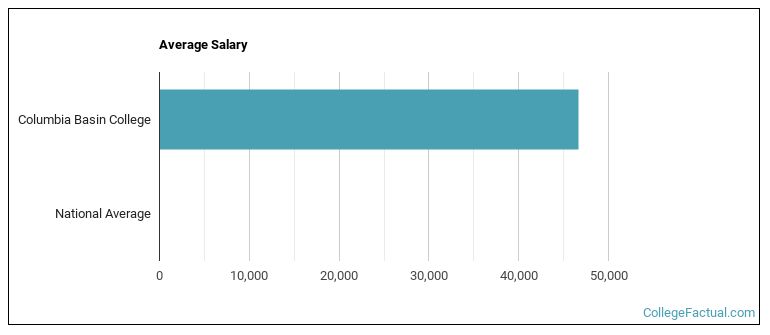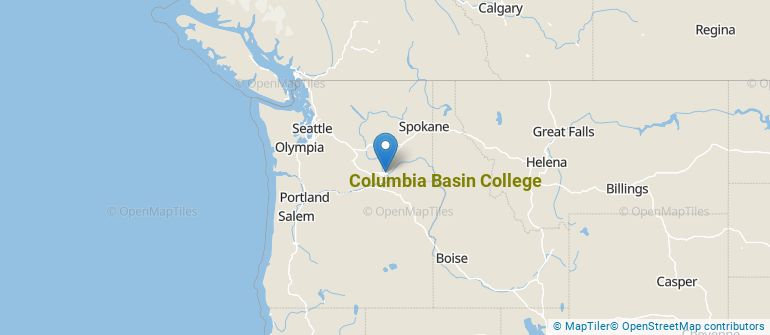 by our College Data Analytics Team
by our College Data Analytics Team
College Factual recognizes the best colleges and universities in its annual rankings. These rankings include categories for best overall colleges, best colleges for each major, best value schools, and much more.
Columbia Basin College was awarded 30 badges in the 2025 rankings. The highest ranked major at the school is business administration & management.
Explore the best ranked schools for the programs you are most interested in.
According to College Factual's 2025 analysis, CBC is ranked #1,042 out of 2,152 schools in the nation that were analyzed for overall quality. This is an improvement over the previous year, when CBC held the #1,177 spot on the Best Overall Colleges list.
CBC also holds the #22 spot on the Best Colleges in Washington ranking.
If you are worried about getting into Columbia Basin College, don't be. The school has a liberal open admissions policy, which means you only need to meet basic requirements in order to be admitted. Still, be sure to submit a complete application and provide any other requested materials.
The student to faculty ratio is often used as a measure to gauge how much access students will have to their professors - the lower the number, the better. At Columbia Basin College, this rate is 19 to 1, which is high when compared to the national average of 15 to 1.
In addition to the student to faculty ratio, some people look at what percentage of faculty members are full-time as a sign of how much time professors will be able to spend with their students. This is because part-time teachers may not be be on campus as much as their full-time counterparts.
The full-time faculty percentage at Columbia Basin College is 100%. This is higher than the national average of 47%.
During the 2017-2018 academic year, there were 6,745 undergraduates at CBC with 3,770 being full-time and 2,975 being part-time.
| $0-30 K | $30K-48K | $48-75 | $75-110K | $110K + |
|---|---|---|---|---|
| $8,081 | $8,094 | $10,488 | $12,267 | $15,841 |
The net price is calculated by adding tuition, room, board and other costs and subtracting financial aid.Note that the net price is typically less than the published for a school. For more information on the sticker price of CBC, see our tuition and fees and room and board pages.
Almost 66% of college students who graduated with the class of 2018 took out student loans, but that percentage varies from school to school. At CBC, approximately 2% of students took out student loans averaging $5,526 a year. That adds up to $22,104 over four years for those students.

See which majors at Columbia Basin College make the most money.
Get more details about the location of Columbia Basin College.

Contact details for CBC are given below.
| Contact Details | |
|---|---|
| Address: | 2600 N 20Th Ave, Pasco, WA 99301 |
| Phone: | 509-547-0511 |
| Website: | www.columbiabasin.edu/ |
| Most Popular Majors | Bachelor’s Degrees | Average Salary of Graduates |
|---|---|---|
| Liberal Arts General Studies | 879 | NA |
| Business Administration & Management | 132 | $48,411 |
| Teacher Education Grade Specific | 124 | NA |
| Nursing | 77 | $85,196 |
| Allied Health Professions | 60 | NA |
| Information Technology | 53 | $59,559 |
| Accounting | 32 | NA |
| Practical Nursing & Nursing Assistants | 23 | NA |
| Precision Metal Working | 21 | NA |
| Foreign Language, Literature & Linguistics (Other) | 20 | NA |
Online learning options are becoming more and more popular at American colleges and universities. Online classes are great for students who have busy schedules or for those who just want to study on their own time.
In 2022-2023, 4,112 students took at least one online class at Columbia Basin College. This is a decrease from the 5,130 students who took online classes the previous year.
| Year | Took at Least One Online Class | Took All Classes Online |
|---|---|---|
| 2022-2023 | 4,112 | 2,103 |
| 2021-2022 | 5,130 | 3,995 |
| 2020-2021 | 5,972 | 5,501 |
| 2018-2019 | 2,692 | 1,043 |
Footnotes
*The racial-ethnic minorities count is calculated by taking the total number of students and subtracting white students, international students, and students whose race/ethnicity was unknown. This number is then divided by the total number of students at the school to obtain the racial-ethnic minorities percentage.
References
More about our data sources and methodologies.